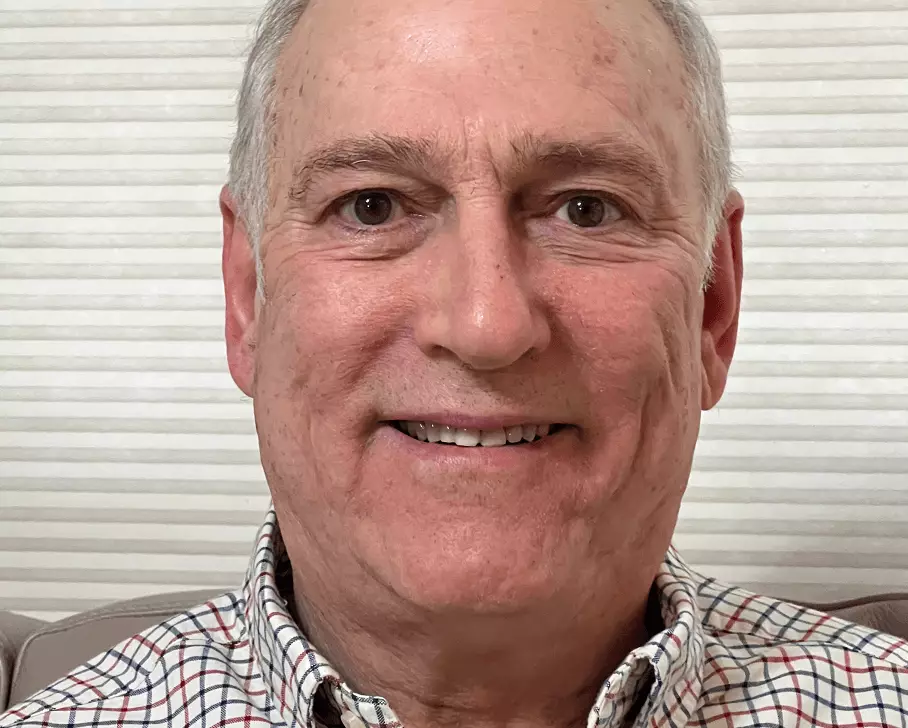Narrative Inquiry Research Design Essentials

By Dr. Jim Lane
Introduction
More specifically than other qualitative study designs, Narrative inquiry presents strategies for researchers to “study the stories people tell about their experiences” (Clandinin, 2007, xiv). On February 20, 2024, the Research Methodology Group hosted a webinar focused on Narrative Inquiry Essentials. In this blog post, we delve into the essence of Narrative inquiry design, exploring its principles, applications, and significance in contemporary research. We end with some suggestions for how to learn more about narrative inquiry.
What is Narrative Inquiry?
Jean Clandinin and Michael Connelly are early and noted practitioners of the narrative inquiry design. Any discussion of narrative inquiry musty include them. They explain, “Narrative inquiry, the study of experience as story, is first and foremost a way of thinking about experience. Narrative enquiry as a methodology entails a view of the phenomenon. To use narrative inquiry methodology is to adopt a particular narrative view of experience as phenomena under study” (Connelly & Clandinin, 2006, in Kim, 2016, p. 18).
Essential Components of Narrative Inquiry
Narrative inquiry is the analysis of a person’s story, of an experience they have had. The goal of researcher is to draw out the story from the participant.
Clandinin and Connelly (2000) describe a model they call a “metaphorical three-dimensional space” to describe their approach to narrative inquiry. They explain the model is based on
Dewey’s notion of interaction, by focusing on what we call four directions in any inquiry: Inward and outward, backward and forward. By inward, we mean toward the internal conditions, such as feelings, hope, aesthetic reactions, and moral dispositions. By outward we mean toward the existential conditions, that is, the environment. By backward and forward, we refer to temporality – past, present, and future (p. 50).
A story can be told many ways, including through visual means. Researchers may create vignettes of each story, create one overarching meta-narrative that includes the main aspects of all shared stories, depict the story through imagery, create a fictitious story/play demonstrating main gist of narratives, or even identify main themes found within the narratives.
Building Appropriate Research Questions and Purpose Statement
From the College of Doctoral Studies Dissertation Guide:
The research questions should focus on temporality, sociality, and spatiality. For example:
R1: What were the participants’ feelings about the experience (name specific experience)? (temporality)
R2: What were the cultural factors and what were the interrelationships with other people involved in the situation (name specific situation)? (sociality)
R3: What was the physical environment during the experience and how did the environment impact the experience (name specific experience)? (spatiality)
A person may use different types of data to tell their story:
Artifacts: “Personal journals, diaries, letters, books, photographs, paintings, personal belongings, formal and informal documents, or any other objects the storytellers would like to share that are related to the telling of their story” (Kim, 2016, p. 177)
Visual data: Websites, photos, advertisements, signs, etc. “We don’t always notice the importance of what we see, nor do we attempt to systematically analyze it. It is the paying attention, the looking and the taking note of what we see that makes images especially important” (Weber, 2008, in Kim, 2016, p. 178).
Digital archival data: Personal stories, folk tales, audio files, video files, etc.
Fieldwork: Living in the research field, collecting data through observations (Connelly & Clandinin, 2006).
The purpose statement for narrative inquiry studies must include the objective of examining participants’ experiences as understood through their stories. The elements of temporality, sociality, and spatiality should be included in the stated study objectives.

Appropriate Interview Questions
Semi-structured interviews use “general questions … to guide the interview, helping you maintain its focus rather than dictate its direction. … They allow you to ask different but relevant questions depending on the interviewee’s responses” (Kim, 2016, p. 164).
In unstructured, open-ended interviews the researcher may have no set agenda. Rather, the researcher plays an active role through asking probing or clarifying questions (Kim, 2016, p. 164) Kim notes, “We have to think narratively about how we can generate interview data that will help us accomplish our research purpose … while leaving room for surprises that might come out of our narrative data” (Kim, 2016, p. 169).
Applications of Narrative Inquiry
Creswell explains, “The focus of a narrative is on the life of an individual” (2013, p. 121). “Within the story may be epiphanies, turning points, or disruptions in which the story line changes direction dramatically. In the end, the narrative study tells the story of individuals unfolding in a chronology of their experiences, set within their personal, social, and historical context, and including the important themes in those lived experiences” (2013, p. 75).
Cole and Knowles argue, “To understand some of the complexities, complications, and confusions within the life of just one member of a community is to gain insights into the collective . . . every in-depth exploration of an individual life-in-context brings us that much closer to understanding the complexities of lives in communities” (2001, p. 11).
Significance of Narrative Inquiry
Narrative inquiry is linked to Schon’s concept of “reflection-in-action,” through which professionals learn the practical application of theory (Schon, 1983). In effect, professionals learn by doing and applying academic knowledge. Schon’s description mirrors the Scholar-Practitioner-Leader Model applied in the University of Phoenix College of Dissertation Studies, which also recognizes the importance of both cognitive learning and the application of that knowledge in practical terms.
Narrative & Theoretical Lens/Prism
Narrative cannot exist in a vacuum. We cannot make sense of the stories told without the help of a theory or the intersection of multiple theories. However, theories should inform or guide us to understand a story but not to diminish our ability to listen. Theories are there to be used, not to dictate to us or shape our stories (Kim, 2016).
For example, critical theory “Examines relationships of domination and subordination that create social inequality in society. … For critical theorists, the ability to look at the contradictions inherent in a society is a starting point to develop forms of social inquiry that interrogate ‘what is in reality’ and ‘what should be?’” (Kim, 2016, p. 36).
Some Common Critical Paradigms
Critical Race Theory focuses on the impact of race and racism (Crenshaw, 1995; Delgado & Stefanic, 2023).
Feminist Theory focuses on “situations of patriarchy, the unequal ways people are treated due to their gender and sexuality, and the meanings we construct or that are constructed by the prevailing value system that assigns gender roles” (Kim, 2016, p. 48).
Queer Theory examines “the homo-heterosexual binary in everyday life, … investigating the way group boundaries are created, negotiated, and changed” (Denzin & Lincoln, 2018, p. 105).
Cultural studies examine cultural practices and subjectivities (Denzin & Lincoln, 2016).
Challenges of Narrative Inquiry
Narrative researchers must anticipate several challenges. First, they must be willing to spend time to read key researchers in the field to understand both theory and practice. Next, they must be willing to spend quality time with the participants. They must also be willing to probe to gather, describe, and understand their participants’ stories. They must be prepared for epiphanies, insights, significant quotes. And finally, narrative researchers must be able to write, not only grammatically, but empathetically, capturing both cognitively and affectively the stories of their participants.
Important Issues to Consider
First, the narrative researcher wants to understand stories that chronicle experience.
This is broader than phenomenology and more focused than a case study. The researcher should also be prepared to keep a journal, including reflective memos to self. This facilitates the reflective process of reflecting on the stories of one’s participants to understand how they apply to the researcher’s problem, purpose, and research questions.
Want to know more?
- Check out the full webinar on Narrative Inquiry that is uploaded to the Research and Methodology Group Teams site.
- Schedule an office hours appointment with a methodologist to discuss your Narrative Inquiry design.
References
Bochner, A.P. (2014). Coming to narrative: A personal history of paradigm change in the human sciences. Left Coast Press.
Braun, V. & Clarke, V. (2013). Successful qualitative research: A practical guide for beginners. SAGE.
Clandinin, D.J. & Connelly, F.M. (2000). Narrative inquiry: Experience and story in qualitative research. Jossey-Bass.
Clandinen, J.C., Huber, J., Huber, M., Murphy, M.S., Orr, A.M., Pearce, M., & Steeves, P. (2006). Composing diverse identities: Narrative inquiries into the interwoven lives of children and teachers. Routledge.
Clandinin, D.J. (Ed.) (2007). Handbook of narrative inquiry: Mapping a methodology. SAGE.
Clandinin, D.J. (2013). Engaging in narrative inquiry. Left Coast Press
Clandinin, D.J., Caine, V., Lessard, S. & Huber, J. (2016). Engaging in narrative inquiries with children and youth. Routledge.
College of Doctoral Studies Dissertation Guide (2024, April 1). University of Phoenix College of Doctoral Studies.
Cole, A.L. & Knowles, J.G. (2001). Lives in context: The art of life history research. Alta Mira Press.
Dewey, J. (1934). Art as experience. Penguin.
Dewey, J. (2015). Experience and education. Free Press (Original work published 1938 by Kappa Delta Pi).
Denzin, N.K., Canella, G.S., Giardina, M.D., & Lincoln, Y.S.(eds.) (2024). The SAGE handbook of qualitative research, 6th ed. SAGE
Kim, J.H. (2016). Understanding narrative inquiry. SAGE.
Riessman, C.K. (2008). Narrative methods for the human sciences. SAGE.
Rose, G. (2016). Visual methodologies. An introduction to researching with visual materials, 4rth ed. SAGE.
Saldana, J.(2015). Thinking qualitatively. SAGE
Saldana, J. & Omasta, M. (2018). Qualitative research: Analyzing life. SAGE.
Schon, D. A. (1983). The reflective practitioner: How professionals think in action. Basic Books, Inc
Additional Resources

Jim Lane, Ed.D.
ABOUT THE AUTHOR
Jim Lane, Ed.D. served as a public school educator for 37 years as an English teacher, district language arts supervisor, and middle school assistant principal and principal. He holds a BA in English-Mass Communications Education, an MA in English, and an MEd and EdD in Educational Leadership. He has worked with the University of Phoenix since 2006 in various roles, including the associate research chair of the Center for Professional Responsibility in Education, research fellow in the Center for Education and Instructional Technology, reviewer for the Dissertation to Publication workshop, and member of the Research Methodology SIG. He is a faculty member in the ACCESS program, facilitating doctoral courses and serving dissertation committees as panel validator.